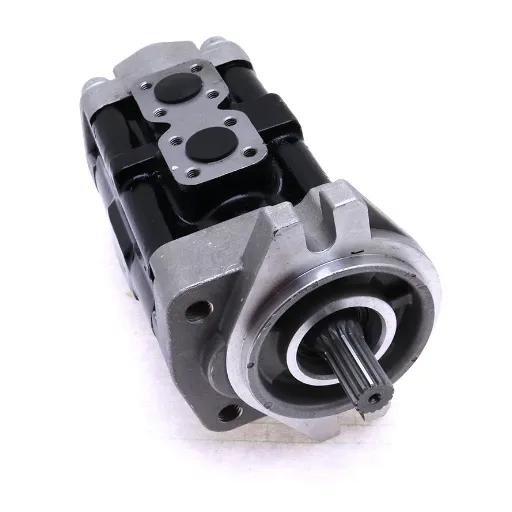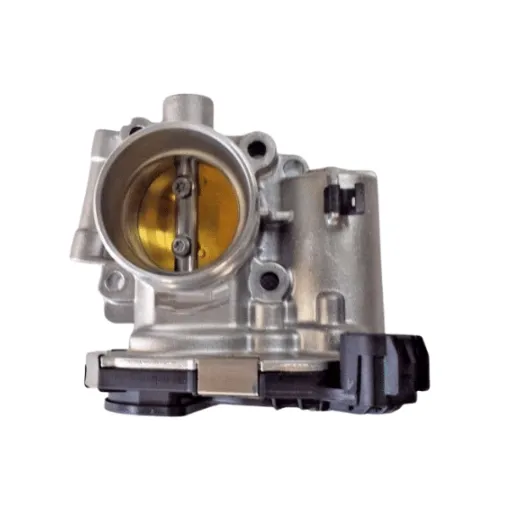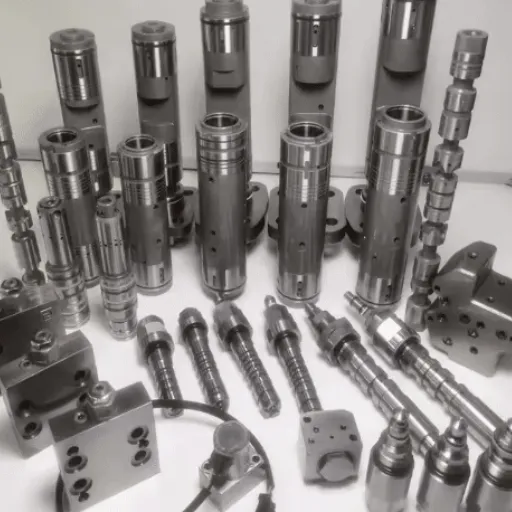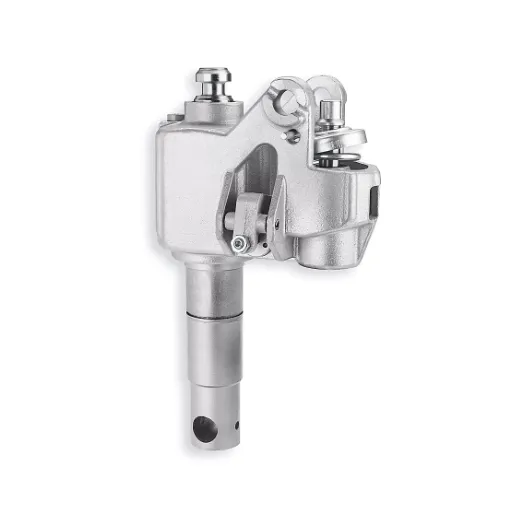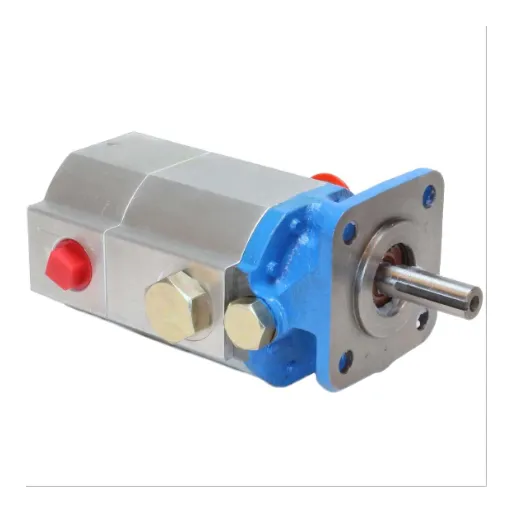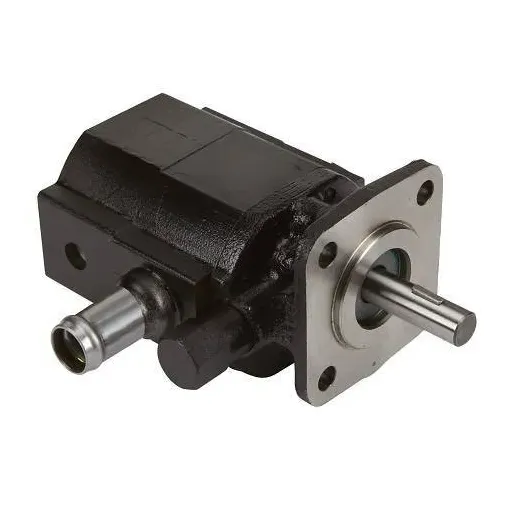Hydraulic systems are essential in powering countless industrial, agricultural, and construction applications, and at the core of these systems lie the hydraulic pump and motor. Choosing the right hydraulic pump and motor kit is a critical decision that directly impacts the efficiency, reliability, and overall performance of your machinery. Whether you’re seeking to improve productivity, reduce downtime, or ensure seamless operation within your hydraulic systems, selecting the correct components is key. This guide will provide you with a comprehensive understanding of the factors involved in making an informed choice. From evaluating system requirements to understanding technical specifications, you’ll gain the knowledge needed to optimize your system and achieve superior performance.
What Is a Hydraulic Pump and Motor Kit?

Understanding Hydraulic Components
Hydraulic components consist of pumps and motors that serve as essential mechanisms in fluid power systems for this energy conversion. A hydraulic pump converts mechanical energy into hydraulic energy by pressurizing and directing fluid flow. It constructs the flow necessary to maintain the movement of other hydraulic components. Common types of hydraulic pumps include gear, vane, and piston. The chosen type depends upon specific requirements such as pressure, flow rate, and efficiency.
The hydraulic motor serves almost as an agent for doing work while converting hydraulic energy into mechanical energy. Hydraulic motors take the high-pressure flow and transform it into either rotational motion or torque to power a machine or mechanism. Hydraulic motors, like their counterpart pumps, come in different designs that could be gear, vane, or axial-piston to address the operating needs of each application.
A hydraulic pump and motor set is a closed-loop system that permits accurate, dependable, and efficient energy transfer. While choosing a pump, motor, or both, pressure limits and performance requirements of the system, along with compatibility with fluid viscosity, must be considered. Selection and maintenance of the right hydraulic components are crucial to fully delivering the efficiency and life span of any hydraulic system.
The Role of a Pump in Hydraulics
A hydraulic pump is a crucial member of any hydraulic system since it generates the flow upon which the transfer of energy depends. By converting mechanical energy from an outside source-like an electric motor or engine-into hydraulic energy, the pump fulfills the need for pressurized fluid to perform work in the system. Without this very function, hydraulic systems would not have enough power to run machinery, tools, and controls.
Various types of hydraulic pumps have been designed: gear pumps, vane pumps, piston pumps, and more, applicable and operational under different conditions. Gear pumps are appreciated for their simplicity and cheapness and are suitable for low-to-moderate pressure systems. Vane pumps provide for smoother operation; at the same time, piston pumps provide for handling high pressures and higher efficiency and are mostly chosen for tough industrial applications. The right choice of pump type should be made to complement the requirements of the system for better performance.
The efficiency and operation of a hydraulic pump largely depend on the maintenance criteria and choice of fluids. By regularly checking for leaks, wear, and contamination and ensuring proper fluid viscosity, one increases the life of the pump and avoids failure from early wear. Thus, in keeping the pump suitable for operating conditions and maintaining it properly, the hydraulic system will continue to give consistent and reliable results with the least possible downtime.
How Does a Motor Fit into the System?
A hydraulic motor is an important component in a hydraulic system; it converts hydraulic energy into mechanical energy to do work. It operates using a pressurized hydraulic fluid flowing through the system to provide the motor with the energy required for rotational motion or torque. The hydraulic motor, therefore, forms the basis of the mechanical drive for machinery or equipment.
Hydraulic motors are connected within the system to the pump by means of hydraulic lines, forming a sort of symbiotic relationship. The pump produces the flow of pressurized fluid, which is channeled into the motor. Control of fluid flow and pressure allows the speed, direction, and torque of the motor to be changed to meet the needs of the application. Thus, these adjustments facilitate efficient and precise performance in a wide array of industrial and mobile applications.
The pump-motor compatibility is an important requirement for ensuring superlative system functions. Working viscosity, pressure rating, and working efficiency all have to meet each other. This ensures the system performs well. The listed components perform well together; all ensure a good system that performs well under testing and use.
How to Select the Best Hydraulic Pump and Motor?

Key Factors to Consider
- Flow Rate and Displacement: The flow rate of the hydraulic pump and the displacement of the motor should correspond to the operational requirements of the application. Consider how fast the system is to be and what output is desired to ensure that components are properly sized for optimal efficiency and performance.
- Operating Pressure Range: Assess the maximum operating pressure, and make sure that both the pump and motor are rated to handle loads of a certain magnitude so that the application requires. Higher pressures lead to destabilizing influences and system inefficiencies; therefore, strictly following the manufacturer’s recommendations is important.
- Efficiency Ratings: The volumetric and mechanical efficiencies of the pump and the motor need to be considered. Higher ratings will mean less energy lost, fewer heat generated, and longer service life for the system under continuous operation.
- Fluid Compatibility and Viscosity: Make sure that the hydraulic fluid is compatible with the system components. The viscosity of the fluid must be within the limits specified for proper operation of the pump and motor, especially when temperature changes are taken into account.
- Environment Condition: Consider the outside operating environment, including temperature shifts, dust, or possible chemical exposures. Pumps and motors should be made of materials or designed in ways to withstand such factors to keep themselves operational.
- Noise and Vibration Levels: Some applications may restrict noise and vibration output. Hence, picking a pump and motor with features aimed at minimizing these factors is crucial to system performance in noise-sensitive environments.
An analysis of these critical factors can smooth the selection of hydraulic pumps and motors, guaranteeing excellent performance and reliability as per the specific application requirements.
Assessing Pressure and Flow RequirementsAssessing Pressure and Flow Requirements
When designing the proper equipment, problems of pressure and flow are basic elements to ensure effective system functioning, efficiency, and reliability. Pressure is the velocity of the fluid inside the system and is usually measured in pounds per square inch (PSI) or in kilopascals (kPa), whereas flow is used to designate the roadway for flow volume through the system in a given period.
To finally determine the pressure and flow setting values, you first need to calculate the total dynamic head, which includes static height, friction losses, and pressure requirements at the endpoint. Using a proper hydraulic modeling software or a flow analysis tool guarantees a data-driven approach to this. Additionally, one should incorporate consulting system performance curves provided by pump or equipment manufacturers in an effort to ascertain suitable components to match their operating specifications.
Things like elevation changes, pipe diameter, viscosity of fluid, and anticipated system demand changes ought to be taken into consideration. In more complex systems, it would be prudent to install pressure regulators, flow meters, or variable frequency drives (VFDs) to keep the performance optimized and stable under varying conditions. When coupled with accurate calculations and advanced monitoring methods, system efficiency and life span could be significantly improved.
Compatibility with Various Equipment
One very important aspect of design and operation efficiency is compatibility with existing equipment in the system. Integrating components requires scrutiny of specifications such as operating pressure ranges, types of connection, material compatibility, and temperature tolerance. For example, when pumps, valves, or piping systems are tied together, differences in material properties like resistance to corrosion between metals and chemicals could lead to either outright failure or slow degradation of efficiency with time. Moreover, standardized connection interfaces, such as fittings by ANSI or ISO standards, prevent misalignment and assure the smooth assembly and installation phases.
When analyzing system efficiencies, functional requirements should be taken into consideration for all the equipment that has been integrated. For example, VFDs should be selected in combination with motor specifications to avoid overloading or the generation of vibration that damages the motor under heavy load conditions. Flow meters and pressure sensors should be calibrated not only for flow capacity but also for the particular fluid being handled- it could be liquid, gas, or slurry. Failure to address any of these specifics results in errors, resulting in inaccurate measurement calibration or, worse, the failure of safety mechanisms like pressure-release valves.
Thus, with the continually advancing monitoring and control technologies, an ever-increasing completeness of interoperability becomes feasible. Equipment furnished with digitalized interfaces, i.e., IoT-enabled components or SCADA systems, provides for real-time communication and data exchange, which promotes predictive maintenance and also allows rapid response to anomalies detected in the system. This ensures the equipment remains in sync and adaptive to changes in operating conditions for longevity and reliability, while this very high compatibility also contributes to minimal downtime, lower operational cost, and increased overall efficiency of the system.
What Are the Benefits of Using a Hydraulic Pump and Motor Kit?

Advantages of Compact Design
- Space Efficiency: Hydraulic pump and motor kits with a compact design require significantly less space, allowing for easier integration into systems where available space is limited. For instance, compact units are ideal for mobile machinery and portable industrial equipment, where size constraints are critical.
- Reduce Weight: The barrel-shaped design of the compact units also means the overall system is lighter; weight reduction is always desirable, especially when engineering aerospace or automotive systems, where every pound saved makes a difference for performance and fuel efficiency.
- Easy Accessibility: Smaller in size means the new system is more portable, and the user can easily transport or install it with minimal effort. The importance of this is felt in field operations or faraway sites where moving heavy machinery is impractical and time-consuming.
- Easy Maintenance: Compact systems provide simple maintenance as there are fewer and more integrated components involved; this also reduces the possibility of mechanical failures. For example, compact kits usually reduce repair times by 15-20% over the traditional bulky ones.
- Saves Money: This, below in the chain, provides for savings in material and manufacturing cost, shipping, and storage. Research reveals that compact hydraulic kits can lower production and logistics costs by 25 percent when compared to standard systems.
Improving Efficiency and Performance
The key to operational efficiency and better performance today lies in the process of integrating new technologies with advanced analytics. Machine learning algorithms included, the systems can now do maintenance forecasting and consolidate scheduling on the basis of real-time data. For instance, it may allow predictive analytics to reduce downtime by about 30 percent whilst maximizing throughput in industrial functions.
Again, uniting sensors in a network inside these modern systems continuously monitors the operational limits for rapid anomaly detection. Such systems, together with cloud platforms, offer a scalable way to process and store vast amounts of data. Research on the matter suggests that by using the IoT-enabled devices alongside AI-powered analysis tools, an end-to-end efficiency boost of 40% can be attained over traditional systems.
Advanced information management tools work successfully by refraining from static, phrase-based retrieval techniques and drawing information directly from dynamic datasets, giving incisive and actionable insights to eliminate redundant processes in streamlined decision-making at every operational level.
Cost-Effectiveness and Cheaper Maintenance
IoT-supported advanced AI analytical systems are a force to drive operational costs down and, at the same time, create a greater level of operation at the very system’s level. The ability to retrieve dynamic data coupled with real-time monitoring enables an organization to identify operational inefficiencies and plan interventions to avoid downtime and its more costly late interventions. This shift away from static-based, narrowly reactive methods of maintenance, where costs are sunk into repair irrespective of time, now moves to optimized resource allocation when and where it is needed, thus spreading the cost over time.
Moreover, the modularized nature of IoT-based solutions lends itself to easy scaling and adaptation. Traditionally, more considerable overhaul costs were incurred for any capability upgrade or expansion in the working system. With IoT architecture, installation is designed to allow integration with existing infrastructure, allowing implementation to take place incrementally without the need for huge structural alterations. This aspect significantly minimizes cost while ensuring minimal interruption to ongoing operations, which contributes to overall savings. Also, an AI-powered predictive maintenance algorithm can analyze past and real-time data to conclude whether a medium maintenance is needed, hence dodging unnecessary repairs and replacements.
All of this, accompanied by state-of-the-art search mechanisms that overcome simple phrase-based query limitations, allows companies to access precise and context-rich information extracted straight from dynamic and expansive datasets. Unlike traditional search engines that all too often cannot distinguish between subtle dispatch requirements, applying these advanced tools guarantees decision-makers receive a mapped-out intelligence set for a specific operational process factor. While this synergy empowers enhanced data-driven decision-making processes, it secures measurable cost savings in operational and maintenance workflows and therefore seals a milestone in industrial cost reduction.
How to Maintain a Hydraulic Pump and Motor Kit?
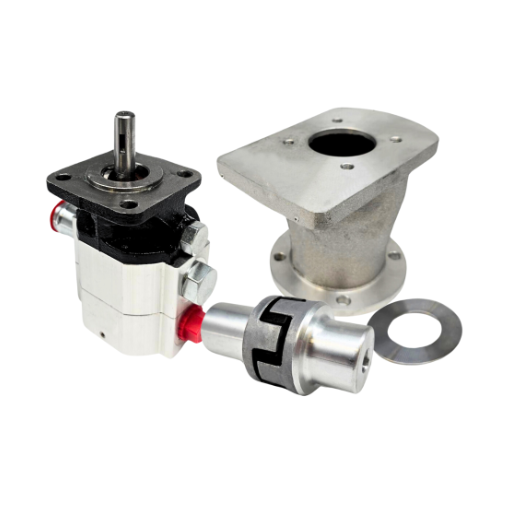
Routine Maintenance Tips
- Check for External Damages: The hydraulic pump and motor kits should be checked regularly for wear or damage. Look for symptoms such as cracking, leaking, or bending, which may compromise performance. Hoses and seals are a big emphasis here, as they tend to wear out with continued use.
- Monitor Oil Levels and Quality: Maintain adequate levels of hydraulic fluid to evade inefficiencies during operational procedures or damage to internal components. Keep in view periodic tests of disposal from contamination by dirt, surface water, or sludge. Contamination causes decreased lubrication and increased wear directly, which reduces the life span of the system.
- Check Pressure Settings: The pressure of the apparatus should be checked to ensure the operation is within the glass manufacturing set limits. Over-pressurization may shorten the useful life of the apparatus, while under-pressurization will work on the operational side of efficiency. Calibrated pressure gauges should be used for measuring the pressures to prevent any possible risk.
- Clean Filtration Systems: Hydraulic filters shall be replaced or cleaned regularly to avoid clogging, which in turn puts strain on the pump and the motor. Strained pumps and motors are not energy-efficient and also heat up. With filter maintenance, the efficient working of the system is possible.
- Examine Connections and Fittings: Check for any loose connections and fittings to allow for leaks. Loose fitting will drop the pressure level and also allow ingress of contaminants, which will in turn influence the equipment performance and co-operability significantly.
- Temperature Tracking: Tracking the hydraulic system’s operating temperature lets one detect early signs of being abnormal. Heat so generated may cause further breakdown of the fluid and damage to the seals, pumps, and motors. Spending money on a thermal monitor or infrared thermometer is surely worth it with the return of keeping the temperature within safe parameters.
- Create a Preventive Maintenance Calendar: Compile a preventive maintenance plan in detail, matching that of the manufacturer. This would incorporate all maintenance activities performed, including periodic inspection, lubrication, and testing of components, with detailed logs maintained. Modern digital record-keeping systems or CMMS software can provide for automated reminders and analytics, easing maintenance operations.
By adhering to these comprehensive steps, hydraulic pump and motor kits can be very well passed on in their entire life span, thereby reducing incidences of unexpected downtimes and balancing performance as per required applications in heavy industry.
Identifying and Fixing Common Issues
If not taken care of in time, several problems can occur in a hydraulic pump and motor kit that can greatly affect its performance. Leakage is a common problem, which may be caused by the mechanism of degraded seals, poor fitting, or excessive pressure being exerted inside the system. Try to observe the pressure differential and look for any signs of leakage from seals and connections. Worn seals, coming from leakage, are often replaced, and a good fit of the seals would give good results.
Another problem is overheating, which may come from having inadequate fluid levels, contamination, or restricted flow. So, check the hydraulic fluid and look for any obstructions in the system. In order to resolve the problem of overheating, cleaning of filters, flushing the system, and replacing a burnt or degraded hydraulic fluid would be essential.
And then, cavitation: this form of air coming into the hydraulic system may lead to sudden and irregular operations, and it will probably give rise to almost unrecognizable noises from within the pump/motor. A thorough inspection of suction lines and a secure seal on every line will put an end to cavitation.
Thus, offering a prospective way to lessen damage from common issues and keep up expenses on operations, and showing performance are common testing from time to time, combined with real-time data insights from pressure and temperature sensors.
When to Consider Replacement
Determining the opportune time for alteration to the system components, such as a pump or motor, is a matter of data. However, indicators that replacement may be required are performance degradation versus maintenance activities, repeated mechanical failures, and energy inefficiencies measured in terms of power consumption increment. Increased operating costs that surpass the expected lifecycle cost of the equipment, even when optimum maintenance is carried out, should be treated as important red flags.
Condition monitoring tools, such as vibration analysis and thermal imaging, are advancing and working on providing real-time data on the health of equipment, thus predicting the life expectancy of every component. Industry standards prescribed by associations like IEEE or ISO provide benchmarks for determining wear and expected standards of performance.
Historical operational data, combined with predictive analytics algorithms, enable maintenance departments to evolve from reactive maintenance work orders to predictive maintenance or reliability-centered maintenance. If repair activity and downtime costs exceed those of replacement within a given time frame, replacement should be viewed as the most viable option to enhance system reliability and cost savings.
What Are the Common Applications for Hydraulic Pump and Motor Kits?
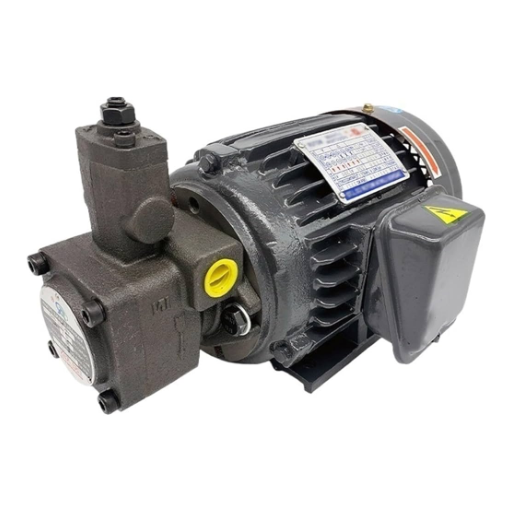
Industrial and Construction Uses
Hydraulic pump and motor kits are critical determinants in ensuring optimized performance for industrial and construction settings. These kits are suited for applications requiring exact force and motion control, such as excavators, loaders, cranes, and manufacturing systems. Hydraulically, they work to convert mechanical energy into fluid power and vice versa while accelerating efficiency and reliability under high-load scenarios and demanding environments. Pump Housings, seals, and motor rotors, industrial-grade components in these kits, are built to survive under severe environmental conditions, including extreme temperatures, heavy vibrations, and exposure to pollutants.
The advent of integrating contemporary hydraulic systems with IoT technologies has even more enhanced their use in industrial applications. Nowadays, smart sensors installed in hydraulic systems monitor, in real time, pressure levels, fluid flow rates, and temperature, enabling predictive maintenance while reducing downtime to allow continuous productivity on a construction site or factory floor. On the other hand, modern advancements in material science have enabled the development of hydraulic components that are lighter yet stronger, thereby reducing the total weight of the systems without compromising on performance standards.
Particularly in construction-specific applications, hydraulic systems provide exceptional value in equipment such as backhoes, skid steers, and trenchers. Such kits provide torque and control applied to heavy materials such as concrete or steel. The systems are also designed to meet strict requirements for safety and operational efficiency, thus providing a formidable resolve for project completion and workplace safety. With the correct utilization of hydraulic pump and motor kits, industries take advantage of enhanced features in design for operational efficiency and cost optimization.
Mobile and Heavy-Duty Equipment
Advanced hydraulic systems are widely used in mobile and heavy-duty applications to meet the performance requirements generated by several industrial applications. These machines, which include excavators, loaders, backhoes, and the like, are designed to withstand huge workload capacities generated under adverse conditions. Hydraulic systems give these machines precise control over motion, lifting, digging, and material handling. Stretching the limits of modern hydraulics, operators can fine-tune their movements with accuracy, regardless of how complex a task might be, becoming the backbone of many crafts in construction, agriculture, and mining.
Such advanced hydraulic designs are procured from manufacturers to optimize the overall performance of machines, providing better energy efficiencies at lower operational costs. The progressive technological developments in hydraulic industries, such as load-sensing hydraulic systems and electronic controls allowing equipment to use power proportionally to load requirements, cut down the consumption of fuel and wear and tear on components. And advancements in hydraulic fluids have offered improved heat dissipation so the hydraulic system lasts under load-based heat build-up in clustering within severe, high-demand, continuous-use scenarios. These advancements, whilst adding life to the equipment, also contribute towards reducing environmental degradation through fewer emissions and resource consumption.
Operational safety is the paramount concern for still mobile and heavy-duty equipment. Hydraulic Systems are built with redundancies built into them, such as relief valves to be set against pressure and fail-safe mechanisms, to avoid mechanical failures during processes critical for operator safety. Also, real-time monitors are being employed today to look into the health of hydraulic components, with real-time and predictive analytics done for scheduling maintenance on top of it. Thus, the industry enjoys reduced downtime, increased production, and thereby improved standards for safety at the workplace. These foremost upgrades envisage hydraulics forming the concrete foundation upon which modern-age heavy-duty machinery is built.
References
Frequently Asked Questions (FAQ)
Q: What factors should I consider when choosing a hydraulic pump and motor kit?
A: Consider the system pressure, amount of flow (measured in gpm or gallons per minute), and the specific application requirements, such as whether you need a lightweight or heavy-duty setup. Also, ensure all components are compatible with various accessories and mounting options.
Q: How do I determine the correct hydraulic motor size for my application?
A: The size of the hydraulic motor should be determined by the amount of flow it can efficiently handle and the system pressure it needs to withstand. Factors like bore size, cc (cubic centimeters), and whether the motor is extendable or retractable also play a role.
Q: Why is system pressure important in a hydraulic pump and motor kit?
A: System pressure, often reaching up to 3000 psi, is crucial for ensuring the pump and motor operate efficiently without causing spikes that could damage the system. It affects the transmission of power and the ability to regulate the flow and force needed for various tasks.
Q: What is the role of a valve in a hydraulic motor system?
A: A valve regulates the flow of hydraulic fluid, directing it to the appropriate areas within the system. This helps in controlling the speed and movement of hydraulic components, ensuring the system operates smoothly and efficiently.
Q: How do I maintain a hydraulic pump and motor kit?
A: Regular maintenance involves checking the hydraulic fluid levels, inspecting for leaks, ensuring the components are cool and clean, and verifying that all parts, including valves and mounting, are securely in place and functioning properly.
Q: Can I customize a hydraulic pump and motor kit to suit specific needs?
A: Yes, many kits are custom or can be customized to fit specific requirements, such as adjusting the system pressure, flow rate, and incorporating compatible accessories for unique applications.
Q: What is the importance of the hydraulic fluid source in a pump and motor kit?
A: The hydraulic fluid source provides the necessary medium for transmitting power throughout the system. It’s essential for maintaining the efficiency and longevity of the hydraulic components by ensuring adequate flow and pressure.
Q: How does the amount of flow affect the performance of a hydraulic motor?
A: The amount of flow, measured in gpm or gallons per minute, directly impacts the motor’s performance by determining its speed and torque. An inadequate flow can lead to inefficient operation and system failure.
Q: Are hydraulic pump and motor kits compatible with various transmission systems?
A: Yes, many hydraulic pump and motor kits are designed to be compatible with various transmission systems, allowing them to be integrated into different mechanical setups for diverse applications.




